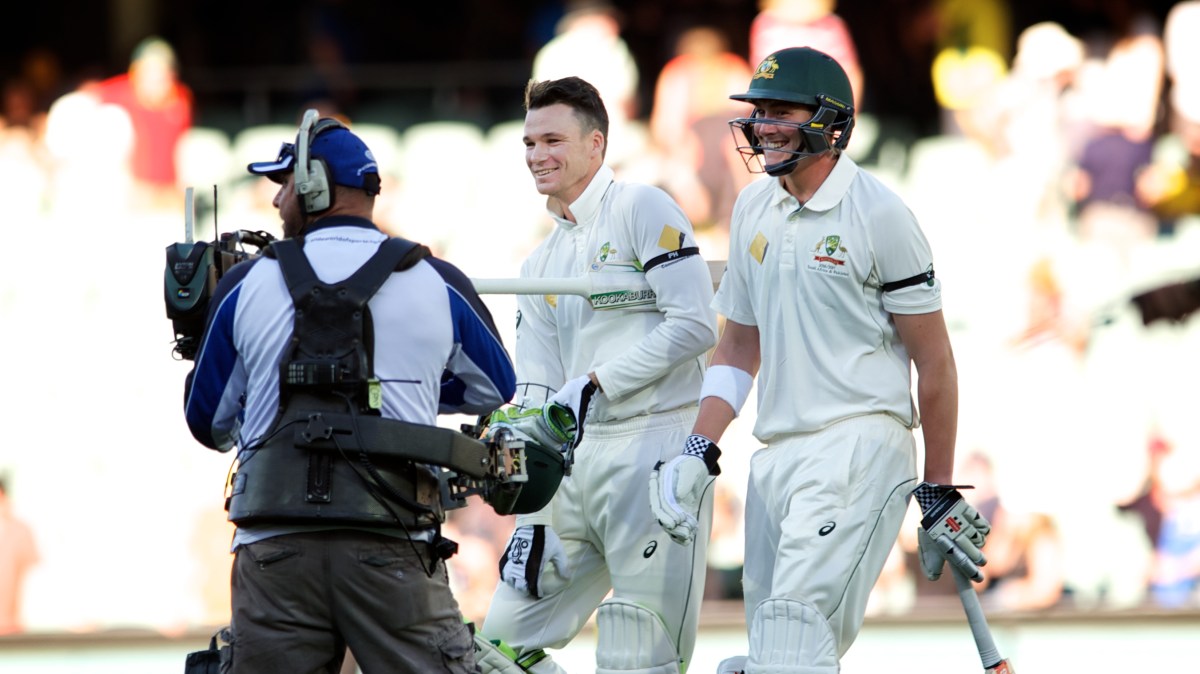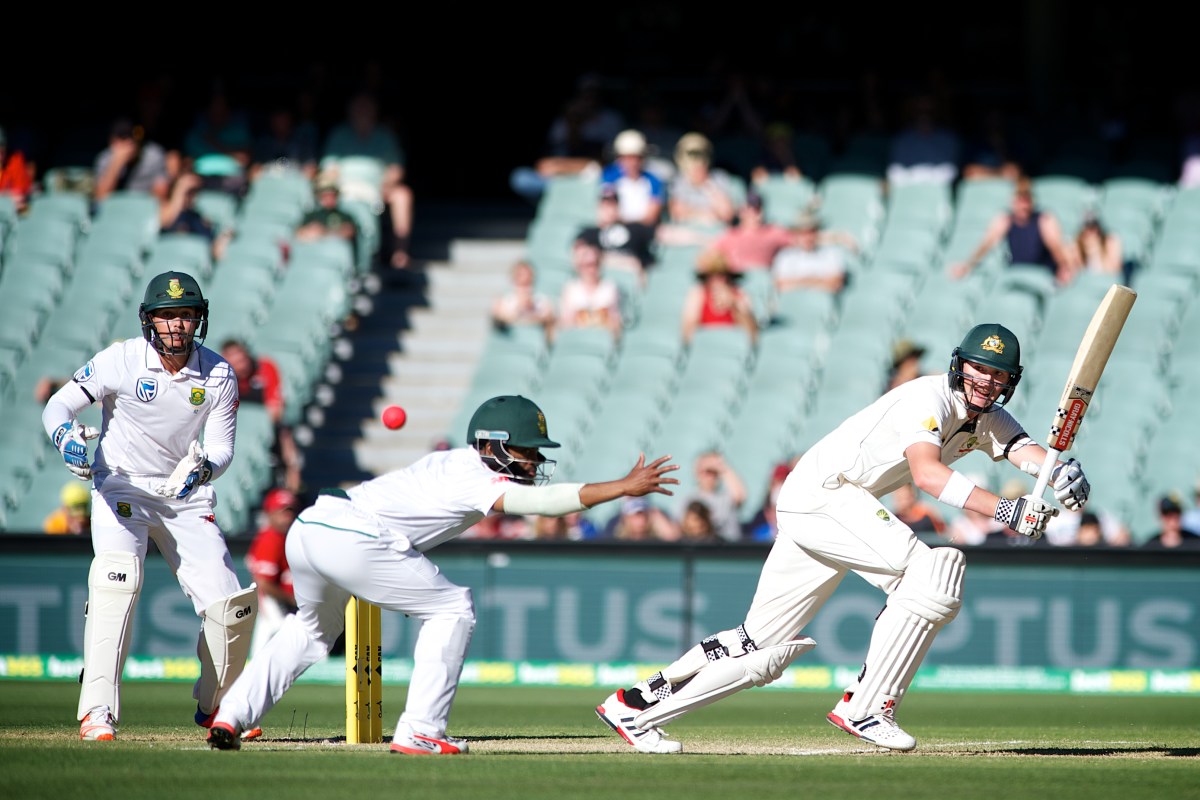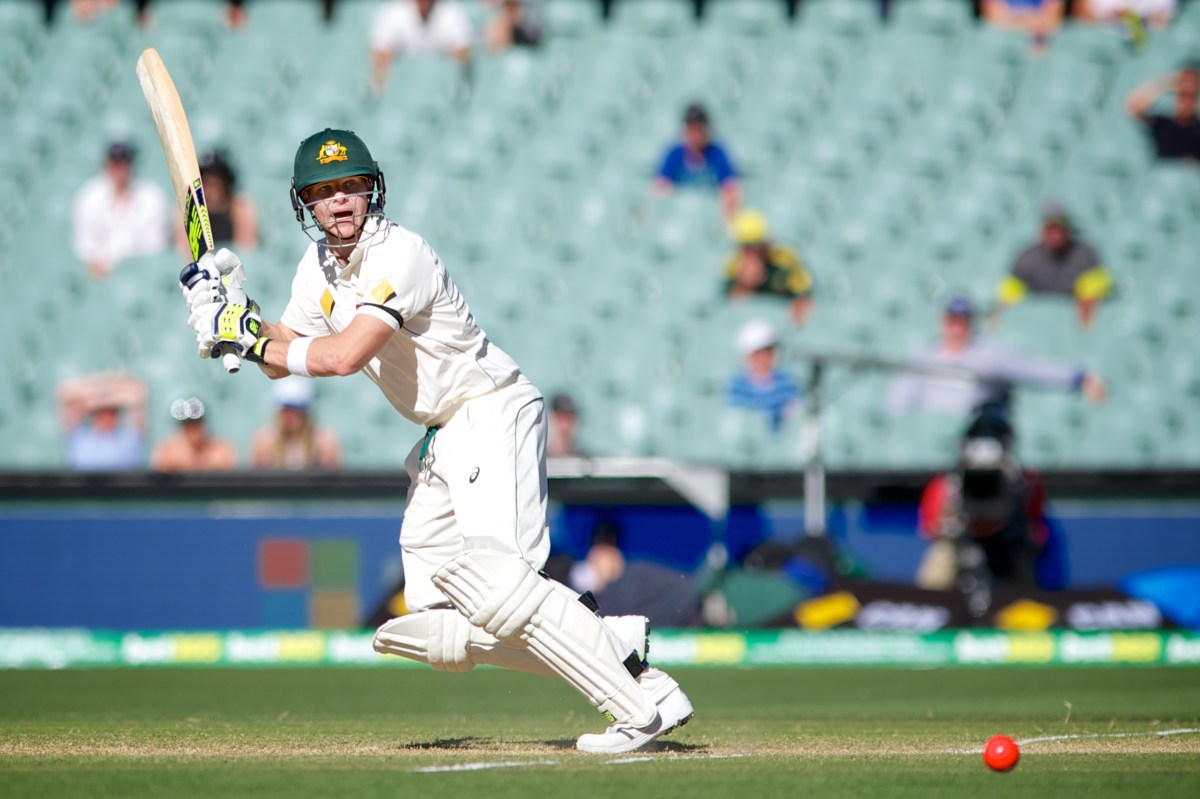Was this the dawn of the Smith era of Australian cricket?
There is an eagerness about the place to proclaim the renaissance of the Australian Test cricket team, but the truth is that it is too early to tell – and the mad scheduling of the Australian cricket season ensures that we will never know.

The Oval vista was again a highlight of the Adelaide Test. Photo: Tony Lewis / InDaily
Indeed, we may never see this group again.
When the Australian Test team next re-assembles, in Brisbane in a fortnight’s time, it will face a new opponent, Pakistan, and an even more frantic schedule of three Tests in barely more than three weeks.
You have to have the Boxing Day Test in Melbourne, you see, and the New Year Test in Sydney. As in politics, so in sport: some things are engraved in stone, and they are mostly about Sydney and Melbourne.

A vision of the future or a moment in time? Renshaw and Handscomb leave the field after wrapping up the Third Test. Photo: Michael Errey / InDaily
With a workload like that, it is difficult to imagine the Australian selectors sending a team to Brisbane without an all-rounder. It was a fair bet to come to Adelaide with only four bowlers, because nobody expected the day-night game with the pink ball to last the distance.
Can we bet against a full-length match in Brisbane? It would take some courage, in the “Yes, Minister” sense.
It is in fact not all that long since Australia played in a Test that went into the fifth day: earlier this month, actually, in Perth, when South Africa batted Australia out of the game by making 540 in its second innings.
And if the Brisbane Test were to go something like the five-day distance, and then a squad of four bowlers had to back up for the Melbourne-Sydney double…well, it just wouldn’t work.
So one of the winning group from Adelaide will probably miss out.
It is likely to be Nic Maddinson, who was possibly a bit lucky to be picked on trust rather than on a streak of hot form, and might be reckoned to have been a bit unlucky to have had to face the new ball in the worst of the light on the second evening.
He was even more unlucky to cop a searing, swinging yorker at more than 140kph before he had scored. In the best light, and with a less-fresh ball, a delivery like that can get you when you are past 50 and seeing the ball so well you almost know what is coming next.
But if you pick a player on trust, and he is unable to make an impact in his first attempt, isn’t there a fairly strong implication that you have to maintain trust in him if you want him to maintain trust in you?
Australia’s promising young batters are going to have to abandon the compulsive forward press of the flat-track bully and rediscover the arts of batting in all seasons
This conundrum makes the case for picking on form. Even Greg Chappell, who could easily have been picked on trust as an outstanding youngster, was made to pile up an irresistible mountain of runs before he got a baggy green cap. That one worked out all right.

A slow walk after an impulsive run: David Warner leaves the field yesterday. Photo: Michael Errey / InDaily
Of course it is not impossible that the selectors will be crazy-brave. Damian Hough’s Adelaide pitch, which offered bowlers movement – and bounce in proportion to how hard they worked for it – may be the new template, and not before time. It provided a much more even contest between bat and ball.
The batting paradises that have been the norm in recent years have produced a lot of one-dimensional cricket – and have encouraged a lot of one-dimensional batting techniques, as Australia’s recent inability to cope with conditions in other countries has so lamentably demonstrated.
If we are now to have proper cricket wickets for the elite, such as those most of us played on down the grades where the bowler was always being offered something, Australia’s promising young batters are going to have to abandon the compulsive forward press of the flat-track bully and rediscover the arts of batting in all seasons.
That will be good.
Whatever changes are made at the margins, this is now Smith’s team
It will be more interesting for spectators, too. They razzed Matthew Renshaw on the last evening yesterday, as he resolutely missed everything that was passing high outside his off-stump, but they loved him too, for repeating what he had shown on the first night – remaining compact and unflustered, playing to the match-situation, making sure.

Renshaw glides Shamsi past Bavuma at short square leg. Photo: Michael Errey / InDaily
Renshaw personifies the change that Steve Smith has wrought in this team. Yes, it was the selectors who chose the players, but let us not forget that Smith had the courage of his convictions and publicly sacked half the previous team at the media conference after the debacle in Hobart a fortnight ago.
Whatever changes are made at the margins, this is now Smith’s team, and at Adelaide it did what he demanded. It played intelligent cricket. This had not been happening, and the malaise goes back further than the 2016 losing streak which was broken over the weekend.
When players are not being hard-headed, no amount of shrewd captaincy can save the side. And Steven Smith is a shrewd captain.
On Saturday night, Nathan Lyon was back on song, and the left-handed JP Duminy was moving into the job of helping Stephen Cook try to build a South African total that would give Australia a bit of trouble chasing down.
Smith removed Lyon’s preferred protective fielder deep on the leg-side, and chose instead to have a second slip, an extra catcher close by the wicket-keeper. It’s an unusual thing to do to a renowned batter on a playable pitch.
Duminy played a shot that he might not otherwise had played, trying to force the ball into that leg-side gap, and was bowled.
A delivery that pitches on middle at a length that the batter can’t reach, and then deviates away from the batter to hit the top of off-stump, is a potential wicket-taker whatever shot the batter plays.
But this is the art of captaincy in the field, especially in long-form cricket. The game goes on for long enough that a shrewd captain can have an instinct for how an opponent will react to events – not always, not any event, but this event, this time, this moment.
Smith backed his feeling about Duminy’s mental state, and Lyon delivered perfectly. In that moment, the game shifted. Now, only Stephen Cook and Quinton de Kock stood between Australia and an inevitable win.

Steve Smith turns Philander for four. Photo: Michael Errey / InDaily
And early yesterday, Smith – rather surprisingly to most people – gave the ball to Jackson Bird.
Bird’s first ball, delivered from characteristically close to the stumps, struck de Kock on the pad.
Appeal. Not out.
Smith called for a review. Out.
Both umpire and batter had been deceived by Bird’s stump-to-stump line.
The contest was over, in barely more than three days. South Africa now had no realistic chance of setting Australia a seriously troublesome target.
All that remained were the last rites.
So watch this new team, and keep a particularly close eye on Steven Peter Devereux Smith.
Australian cricket has been blessed with many fine captains, but this deceptively fresh-faced bloke is special. He reads people.
Do not play poker against him for money.
Michael Jacobs is a freelance writer.




